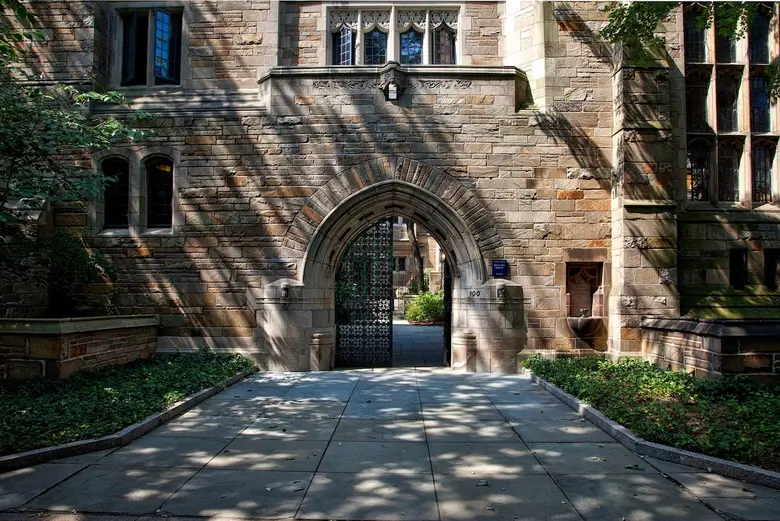
College campuses buzz with the energy of learning and connection, offering students a vibrant space to chase dreams and forge lifelong bonds. Yet, like any community, they face risks—from natural disasters to unexpected security threats—that demand vigilance and readiness. Drawing from personal experiences and insights, this guide explores how students, faculty, and staff can foster a secure environment through awareness, institutional protocols, and practical self-defense strategies.
The Importance of Vigilance in a Campus Setting
Campuses are microcosms of society, blending diverse groups in close quarters, which amplifies the need for proactive safety measures. Emergencies, whether a fire, severe weather, or an active threat, can disrupt this dynamic environment swiftly. Understanding these risks sets the foundation for preparedness.
In my freshman year, a late-night fire alarm in our dorm caught us unprepared, revealing how quickly chaos can unfold. Awareness of potential hazards empowers students to respond calmly. It’s about cultivating a mindset that balances enjoyment with caution.
Statistics show campus crime, while often low, includes incidents like theft or assault, with 2023 reporting 38,000 crimes across U.S. campuses. Natural disasters also pose risks, especially in regions prone to hurricanes or earthquakes. Staying informed reduces vulnerability.
Colleges invest heavily in safety, but students must engage actively. Ignoring alerts or protocols can escalate minor issues. Proactive awareness bridges this gap.
Building a Safety-First Mindset
Start by familiarizing yourself with campus layouts, noting exits and safe zones. Regular mental rehearsals of escape routes build confidence. I practiced these after my dorm scare, easing future anxieties.
Stay updated on local weather patterns or regional risks. Apps like FEMA provide real-time alerts. Knowledge is your first defense.
Understanding Institutional Safety Protocols
Colleges implement detailed plans to manage crises, from evacuations to lockdowns. These are often outlined in student handbooks or websites. Reviewing them early ensures you’re not caught off-guard.
My university’s alert system sent texts during a nearby security threat, guiding us to shelter in place. Familiarity with such systems, like Rave or Everbridge, is crucial. They deliver real-time instructions.
Protocols cover diverse scenarios, including medical emergencies or hazardous material spills. Training sessions, often mandatory, teach response basics. Participation strengthens community resilience.
Campus police and safety offices are key players. Building rapport with them, as I did through open forums, demystifies their role. They’re resources, not just enforcers.
Recent data emphasizes robust alert systems, with 90% of colleges using mass notifications. Engaging with these tools ensures you’re in the loop. Ignorance of protocols risks delays in response.
Accessing Safety Resources
Check your school’s safety webpage for maps and contacts. Save emergency numbers in your phone. Quick access saves critical moments.
Attend safety orientations or drills. They simulate real scenarios, boosting readiness. I found these practical for internalizing procedures.
Common Campus Emergencies and How to Prepare
Natural disasters like tornadoes or floods vary by region but require universal preparedness. Know your campus’s risk profile—coastal schools face hurricanes, while others tackle blizzards. Preparation starts with awareness.
Active shooter scenarios, though rare, demand specific responses: run, hide, or fight as last resort. Training videos from campus police clarified these steps for me. Practice mentally to stay composed.
Fire hazards are common, with 1,600 campus fires annually. Know evacuation routes and avoid elevators. My dorm’s monthly drills ingrained this habit.
Medical emergencies, like injuries or mental health crises, require swift action. Campus clinics or hotlines offer immediate support. I once assisted a friend to the health center, grateful for its 24/7 access.
Theft and assault, while preventable, occur in high-traffic areas. Awareness of surroundings reduces risks. Simple habits make a difference.
Emergency-Specific Preparations
For weather events, keep a go-bag with essentials like water and IDs. Update it seasonally. It’s a small effort for big peace of mind.
For security threats, memorize key phrases like “lockdown” from alerts. Practice situational awareness daily. These habits become second nature.
Self-Defense Strategies Every Student Should Know
Basic self-defense empowers confidence in unpredictable situations. Techniques focus on escape over confrontation, emphasizing awareness and de-escalation. I took a campus workshop that transformed my sense of control.
Learn simple moves like palm strikes or knee lifts, taught in many free campus classes. These require minimal strength but maximize impact. Practice builds muscle memory.
Situational awareness—scanning surroundings and trusting instincts—prevents many risks. Avoid distractions like earbuds at night. I adopted this after a late walk felt uneasy.
De-escalation techniques, like calm speech, diffuse tense encounters. Role-playing in workshops helped me master this. It’s about staying composed under pressure.
Carry legal safety tools, like whistles or pepper spray, if permitted. Check campus policies first. Knowledge of rules avoids complications.
Practical Self-Defense Tips
Travel in groups at night, using well-lit paths. Campus escorts often provide safe rides. I used these regularly, feeling secure.
Enroll in self-defense courses early. They’re often free and empowering. Confidence grows with practice.
Campus Safety Resources and How to Use Them
Most campuses offer 24/7 security services, including patrols and emergency phones. Blue-light stations connect directly to police. Mapping these early saved me during a late-night study session.
Counseling centers address mental health crises, a growing concern with 40% of students reporting anxiety. Access them for support or referrals. They’re underutilized but vital.
Apps like LiveSafe allow anonymous incident reporting. They also share safety tips. Download and explore their features.
Title IX offices handle harassment or assault cases, ensuring fair processes. Knowing their role empowers action. I attended their workshops, gaining clarity on rights.
Community programs, like bystander training, foster collective safety. Engaging in these builds a stronger campus. Participation amplifies impact.
Maximizing Resource Access
Bookmark safety websites for quick reference. Add apps to your home screen. Accessibility ensures usage.
Attend resource fairs to learn offerings. Networking with staff personalizes support. Proactive steps enhance security.
Building a Personal Safety Plan
A tailored plan integrates campus resources with personal habits. Outline steps for common scenarios, like evacuations or medical needs. I created one after a campus flood, streamlining my response.
Include emergency contacts, both campus and personal. Share with trusted friends. This ensures quick communication in crises.
Practice routes to safe zones, like designated shelters. Timing these walks builds familiarity. Preparation reduces panic.
Regularly update your plan as schedules change. New dorms or classes alter risks. Staying current keeps it relevant.
Recent advice stresses personalized plans for diverse needs. They empower proactive responses. Tailor to your lifestyle.
Components of a Strong Plan
List key contacts, locations, and tools. Keep digital and physical copies. Accessibility is critical.
Schedule periodic reviews. Adjust for new risks or resources. Consistency maintains effectiveness.
Navigating Social Settings Safely
Parties and events are campus staples but carry risks like alcohol-related incidents. Set boundaries, like drink limits, before attending. I learned this after a friend’s overindulgence required intervention.
Use buddy systems to stay accountable. Check in regularly with friends. This simple habit prevents isolation.
Know signs of spiked drinks or unsafe behavior. Quick exits to safe spaces, like dorms, are key. Trust your instincts always.
Campus resources offer safe ride programs for late nights. Use them to avoid risky walks. They’re free and reliable.
Bystander intervention training equips you to help others safely. I stepped in once, defusing a tense situation. It’s empowering and communal.
Social Safety Practices
Pre-plan transportation home. Apps like Uber or campus shuttles work. Safety trumps convenience.
Learn basic first aid for emergencies. Free workshops teach CPR. Preparedness saves lives.
Technology’s Role in Enhancing Safety
Smartphones are lifelines, offering apps for alerts and tracking. Tools like bSafe share locations with trusted contacts. I used one during solo travels, feeling secure.
Campus-specific apps integrate with security systems. They provide maps and hotlines. Download them at orientation.
Wearables can signal emergencies discreetly. Some alert police with a button press. Technology amplifies response speed.
Social media keeps you informed of campus updates. Follow official accounts for real-time news. It’s a modern safety net.
Balance tech reliance with awareness. Over-dependence risks distraction. Use as a tool, not a crutch.
Top Tech Tools
Explore apps like Noonlight for panic buttons. They’re user-friendly and effective. Test features early.
Enable phone location services. They aid emergency responders. Privacy settings balance safety and control.
Community Involvement in Safety Culture
Campuses thrive when everyone contributes to security. Student-led safety committees advocate for improvements. Joining one gave me a voice in policy changes.
Reporting hazards, like broken lights, prevents incidents. Anonymous apps make this easy. Collective vigilance strengthens campuses.
Peer education programs spread awareness. I led a workshop, empowering freshmen. It builds community and skills.
Data shows engaged campuses report fewer incidents. Collaboration with administration enhances trust. Active participation matters.
Volunteer for safety patrols or events. They foster connections and alertness. Every role counts.
Ways to Get Involved
Join safety task forces or clubs. They offer leadership opportunities. Impact extends beyond campus.
Attend town halls on safety. Voice concerns and solutions. Engagement drives change.
Mental Health and Its Role in Safety
Stress or anxiety can impair judgment, increasing risks. Recognizing signs early prevents escalation. I sought counseling during finals, regaining clarity.
Campuses offer free mental health services, from therapy to hotlines. Use them proactively. They’re stigma-free zones.
Peer support groups foster open dialogue. Sharing struggles with classmates normalized seeking help. It’s a safety net for well-being.
Studies link mental health to safer decision-making. Self-care enhances alertness. Prioritize it alongside physical safety.
Mindfulness apps like Headspace reduce stress. Daily practice kept me grounded. Small steps yield big results.
Integrating Mental Wellness
Schedule regular check-ins with counselors. They tailor coping strategies. Prevention beats reaction.
Build support networks with peers. Open conversations reduce isolation. Community bolsters resilience.
Equipped with these strategies and resources, you can embrace campus life with confidence, knowing you’re prepared to handle any challenge while fostering a safer community for all.




